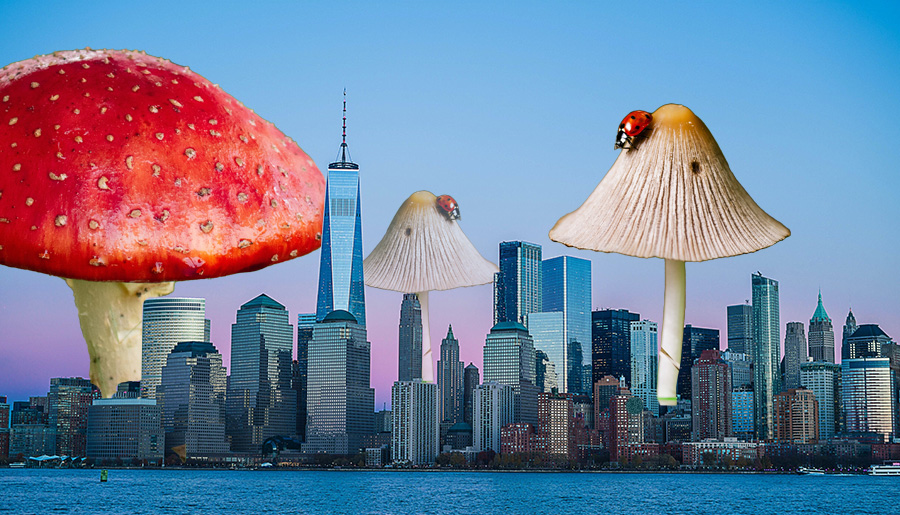Despite what Blade Runner might say, the future won’t be made from steel beams and giant Cola ads. What’s more, it may instead be made of mushrooms. For mushrooms might replace meat. For mushrooms might eat cigarette butts. For even homes and skyscrapers might be built from mushroom-processed materials.
According to Tien Huynh, from the Royal Melbourne Institute of Technology’s School of Science, the roots and fibres of some mushrooms are incredibly strong. It’s Huynh’s dream that these elements, called mycelium networks, will be mass-processed into building blocks.
As this Associate Professor said, “These materials are five times stronger than petroleum-based products, such as polystyrene, grow on agricultural waste with low carbon inputs, have a minimal environmental impact, and are fully biodegradable.”
Additionally, Huynh isn’t the only person who believes that mushroom buildings should be the future. Back in 2014, some New York architects from The Living designed a mycelium tower that was built at The Museum of Modern Art. It was called the Hy-Fi, was made from 10,000 mycelium bricks, and had a minuscule carbon footprint.
Private preview of this summer’s Warm-Up installation at @MoMAPS1 #HyFi #theliving pic.twitter.com/jtYy6Cmk7I
— jackiecaradonio (@jackiecaradonio) June 27, 2014
“In this project, we’re using a living organism as a factory,” explained David Benjamin, the key creator of said building. “So the living organism of mycelium, or hyphae, which is basically a mushroom root, basically makes our bricks for us.”
“It grows our bricks in about five days with no energy required, almost no carbon emissions, and it’s using basically waste: Agricultural byproducts, chopped up corn stalks. This mushroom root fuses together this biomass and makes solid bricks which we can kind of tune to be different properties.”
Unfortunately, in the year 2023, the Hy-Fi is no longer with us.
What’s more, even though it’s been over eight years since the Hy-Fi was built, making mycelium building blocks is still incredibly tricky.
“It’s a living organism,” stated Huynh. “It’s prone to contamination, and a lot of experimentation is needed to perfect the final product.”
So, with all of this in mind, when will I be able to live in a mushroom building? Live in my Hans Christian Andersen utopia? Well, it could be a while, but when it arrives, I’ll be ready.
Related: How Australia’s Mushrooms Are Reshaping a Nation
Related: Welcome to 2023 — Mushrooms Eating Cigarette Butts
Read more stories from The Latch and subscribe to our email newsletter.

